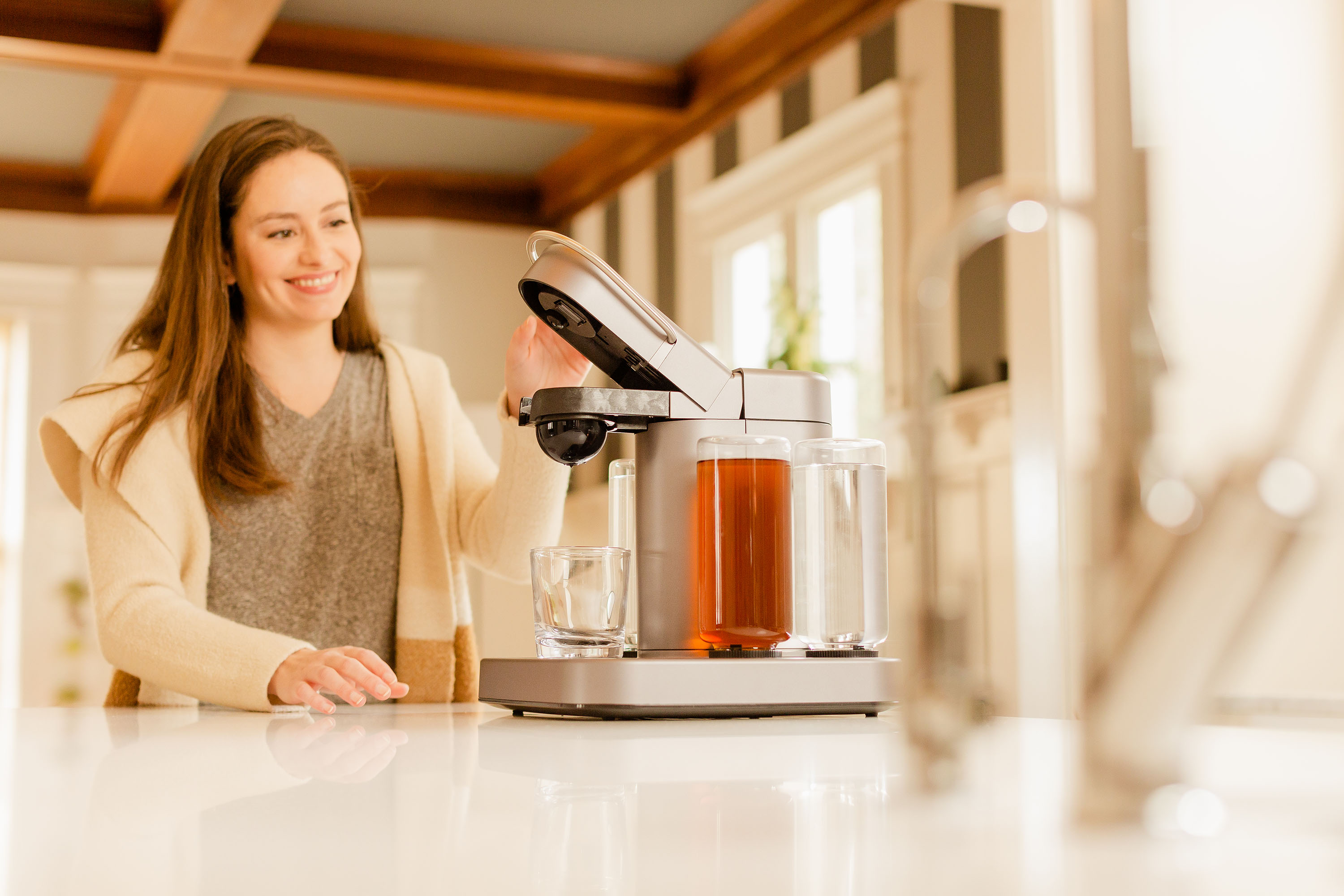
One of the best parts about hosting holiday parties is making drinks everyone loves. One of the worst parts about hosting holiday parties is making drinks. Do you want to be stranded behind some bar cart or in the kitchen while everyone has fun and mingles?
We doubt it. So, what’s it worth to you to be able to mingle at your party but still have everyone getting the drinks they want? $366, maybe? The Bartesian cocktail maker may be what you need; it is a do-it-yourself Keurig-style cocktails machine that really does a very good job at (mostly) automating drink making.
Bartesian pods are dry mix cocktail mixers that pop into the machine like those ubiquitous coffee pods. Drop a pod in, select the strength of your drink, and the machine gets to work. The only “job” you’ll have is making sure the liquor – which you need to supply – stays stocked.
You can use vodka, tequila, whiskey, gin, rum, and water. Bartesian pods are specific to the drink people want and even tell them which glass to grab. From Bartesian:
Bartesian capsules [contain] all the premium bitters, extracts, juice concentrates, and mixers that would otherwise need to be individually sourced, purchased, and stored. Once the Bartesian capsule is inserted into your Bartesian cocktail machine, the cocktail is immediately identified via barcode and suggests the proper glassware on the user interface touchscreen.
The machine identifies the drink via a barcode, then mixes in the proper amount of alcohol for each drink. Popular drinks like Whiskey Sour, Long Island Iced Tea, Margarita, Cosmopolitan, Sex on the Beach, and many more are optional. Guests can snag a pod, plop it into the machine, grab a glass, and let Bartesian do the rest.
The drinks are surprisingly good but could be better. Pods are concentrated add-ins, so an Old Fashioned made by a Bartesian machine likely isn’t as good as one made with bitters you made yourself. On the upside, you can choose the quality of alcohol you use, which goes a long way when mixing
We love Bartesian for gatherings, and it’s not a bad option for at-home end-of-day drink mixology. Bartesian even has a nice auto-rinse feature, so your Cosmo doesn’t taste like a Margarita someone made before you walked up to the machine.
You can order a variety of pod packs, or keep it limited to one drink. If your day often ends with a Lemon Drop, order a slew of Lemon Drop pods and wind down quietly while Bartesian does the mixing.
Bartesian isn’t for everyone. Some of us enjoy the hands-on activity of mixing drinks at the end of our day or hosting parties from behind a bar. For those who don’t want to exert energy or may not have the time to mix




